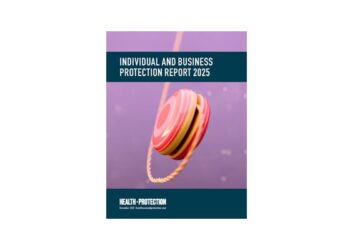Good fair value assessments must tell a credible story using data, according to James Daley, managing director at Fairer Finance (pictured),
Daley told ProtectX9’s audience that they should include a proper benchmarking exercise, be honest with customers where a proposition is not as compelling and ensure that customers know what they are buying.
Daley said that Fairer Finance had compiled dozens of fair value assessments, witnessing “some excellent ones as well as some poorer ones”.
Why fair value assessments matter
Elaborating on why fair value assessments matter, Daley explained while customers have a feel for fair pricing such as when they visit the local pub, when it comes to financial services, these purchasing decisions may be made once in a lifetime.
“That means there’s no room for customers to learn,” Daley explained.
“So a fair value assessment is a chance to put your self in your customer’s shoes and consider whether the price they’re paying is fair relative to the product features and the service that you’re offering and relevant to what they could have got elsewhere.
“There’s not an invisible line in the sand that you need to scrabble about for, with good value on one side and poor value on the other.”
Telling a credible story with data
Daley maintained a good fair value assessment is about telling a credible story with data which needs to begin with a proper benchmarking exercise.
“How does your price, your product features and your service compare to other propositions in the market?” Daley asked.
“Think of a scale with price on one side, product features and service on the other.
“If you’re more expensive than most of your competitors, then you would expect that to be justified by a better quality product and better service levels.
“Your brand can also be a better justification for charging more, particularly in the world of insurance where your product is essentially a promise.
“When you’re benchmarking your product, you need to make sure you’re comparing yourself to the right peer group.
“And you need to make the effort to look at as much of the market as you can – not just one or two competitors.”
Looking at profitability
But Daley added firms also need to look into profitability and drill down to understand what that looks like among different customer groups.
“You’re not doing this exercise because there’s a right and wrong amount of profitability,” Daley continued.
“You’re doing it to identify whether any groups of your customers might be getting a bad deal.
“One of the common mistakes we see with fair value assessments is that firms look at profitability across the book.
“Instead, try and answer the question who are my most profitable customers and are they still getting as good value as my least profitable ones?”
Costs in the distribution chain
The next step, Daley added, is to to understand whether the costs that are being passed down the distribution chain are reasonable.
“That means asking suppliers or distributors to share their fair value assessments with you,” Daley.
“This can be difficult as a smaller firm. At the very least you need to be asking for these assessments and the bigger firms need to be ready to challenge fair value elsewhere in the chain.”
It is at the point firms have gathered the data that they can tell a story with it, Daley continued.
“There may be good reasons why your prices are higher relative to your competitors,” he said.
“For example, as a smaller firm, you may have higher costs which means you can’t afford to charge less or your route to market may be more costly than your competitors.
“A good fair value assessment will be honest about where the value equation may not be as compelling and either provide mitigation or a commitment to try and improve.
“The expectation is not that everyone is perfect, but where you uncover elements of poor value in your proposition or charging structures, you need to make a commitment to address these over time.”
Understanding the purchase
And finally, Daley said, assessments should let customers understand what they are buying and whether they would make the same decision again if they were in possession of all the facts.
“Customer understanding is inextricably linked to fair value,” Daley said.
“If you’re a broker then it’s obviously your job to understand the trade offs and the choices that they need to make to guide them to the right product.
“If you’re a provider, you need to ensure that you have the right checks in place to ensure that your distribution network is helping your customers make informed decisions. Or if you’re selling direct, you have to ensure you’re giving the customer all the right information to make a good decision.”
Feeling uncomfortable
Daley added that sometimes doing the right thing will feel uncomfortable.
“In fact, we often say if it doesn’t feel a little uncomfortable while you’re doing your fair value assessment, you’re probably not doing it right,” Daley continued.
“For example, if you’re selling over-50s life insurance directly to customers and you’re bringing it directly to them via TV advertising, there’s a greater chance that they won’t have considered their other options.
“As a provider, your responsibility is to make them aware of their other choices in the market as well as the limitations of your product.
“Yes, that means telling them very clearly that they may get back less than they pay in, that inflation will erode the value of their pay out.”
But that also means letting customers know that a savings product or a funeral plan can be better if their main aim is to save for a funeral, Daley said.
“Providers often assume that if they’re brutally honest with customers in this way then they’ll scare them off,” Daley pointed out.
“In fact, it often engenders greater levels of trust and has a much smaller impact on conversion than they might have expected.
“But of course it does also stop you selling products to people where it’s not suited.
“It’s in everyone’s interest to really embrace the spirit of the fair value rules.”






